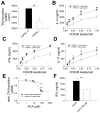TRPM2 cation channels modulate T cell effector functions and contribute to autoimmune CNS inflammation
- PMID: 23077651
- PMCID: PMC3470594
- DOI: 10.1371/journal.pone.0047617
TRPM2 cation channels modulate T cell effector functions and contribute to autoimmune CNS inflammation
Abstract
TRPM2, a highly Ca(2+)-permeable member of the transient receptor potential melastatin-related (TRPM) family of cation channels, is expressed in cells of the immune system. We demonstrate firstly that TRPM2 cation channels on T cells critically influence T cell proliferation and proinflammatory cytokine secretion following polyclonal T cell receptor stimulation. Consistently, trpm2-deficient mice exhibited an attenuated clincal phenotype of experimental autoimmune encephalomyelitis (EAE) with reduced inflammatory and demyelinating spinal cord lesions. Importantly, trmp2-deficient T cells were as susceptible as wildtype T cells to oxidative stress-induced cell death as it occurs in inflammatory CNS lesions. This supports the notion that the attenuated EAE phenotype is mainly due to reduced T cell effector functions but unaffected by potential modulation of T cell survival at the site of inflammation. Our findings suggest TRPM2 cation channels as a potential target for treating autoimmune CNS inflammation.
Conflict of interest statement
Figures




References
-
- Feske S (2007) Calcium signalling in lymphocyte activation and disease. Nat Rev Immunol 7: 690–702. - PubMed
-
- Schuhmann MK, Stegner D, Berna-Erro A, Bittner S, Braun A, et al. (2010) Stromal interaction molecules 1 and 2 are key regulators of autoreactive T cell activation in murine autoimmune central nervous system inflammation. J Immunol 184: 1536–1542. - PubMed
-
- Harteneck C (2005) Function and pharmacology of TRPM cation channels. Naunyn Schmiedebergs Arch Pharmacol 371: 307–314. - PubMed
-
- Kraft R, Grimm C, Grosse K, Hoffmann A, Sauerbruch S, et al. (2004) Hydrogen peroxide and ADP-ribose induce TRPM2-mediated calcium influx and cation currents in microglia. Am J Physiol Cell Physiol 286: C129–137. - PubMed
Publication types
MeSH terms
Substances
LinkOut - more resources
Full Text Sources
Molecular Biology Databases
Research Materials
Miscellaneous

